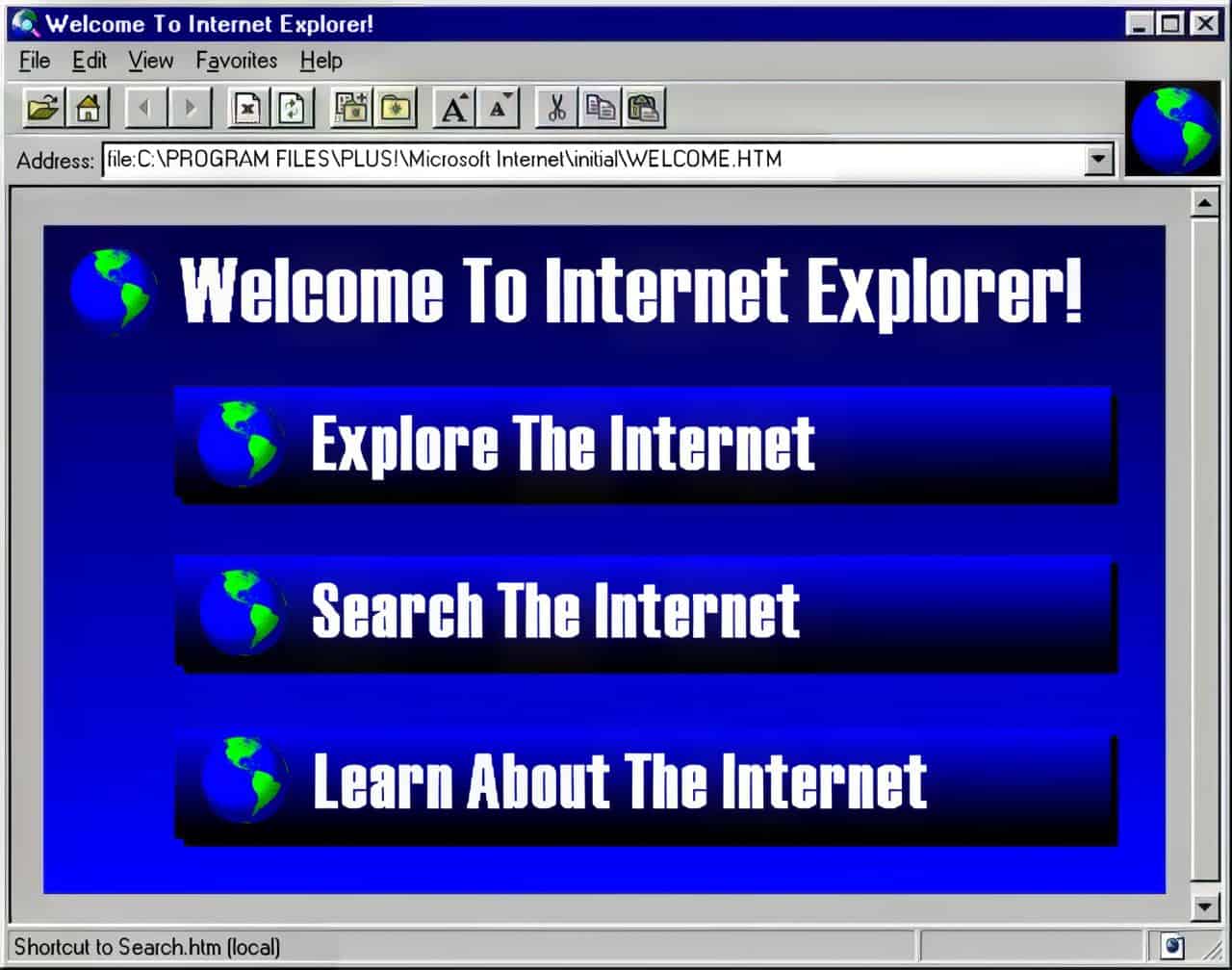Ever felt like you’re on an endless quest for the ideal browser—one that lets you zip through the digital expanse both rapidly and without a hitch? Trust me, it’s a common endeavor.
Like many of us, I’ve navigated my way through the complex legacy of Internet Explorer to uncover its influence on our online experiences. Journey with me as we delve into this story and track IE’s evolution from trailblazer to artifact—and unpack why its tale is significant for all who roam the web.
Buckle up; this exploration might just take some unexpected turns!
Key Takeaways
Microsoft made Internet Explorer in 1995 using parts of Spyglass Mosaic.
The browser battles started with Internet Explorer vs. Netscape Navigator in the late ’90s.
From 2003 to 2006, IE focused on safety with updates like Windows XP Service Pack 2.
New browsers, Firefox and Chrome, became popular, making it hard for IE after 2006.
Microsoft launched Edge in 2014 as a new browser to replace Internet Explorer.
Table of Contents
Birth of Internet Explorer and the Role of Spyglass Mosaic (1995–1997)
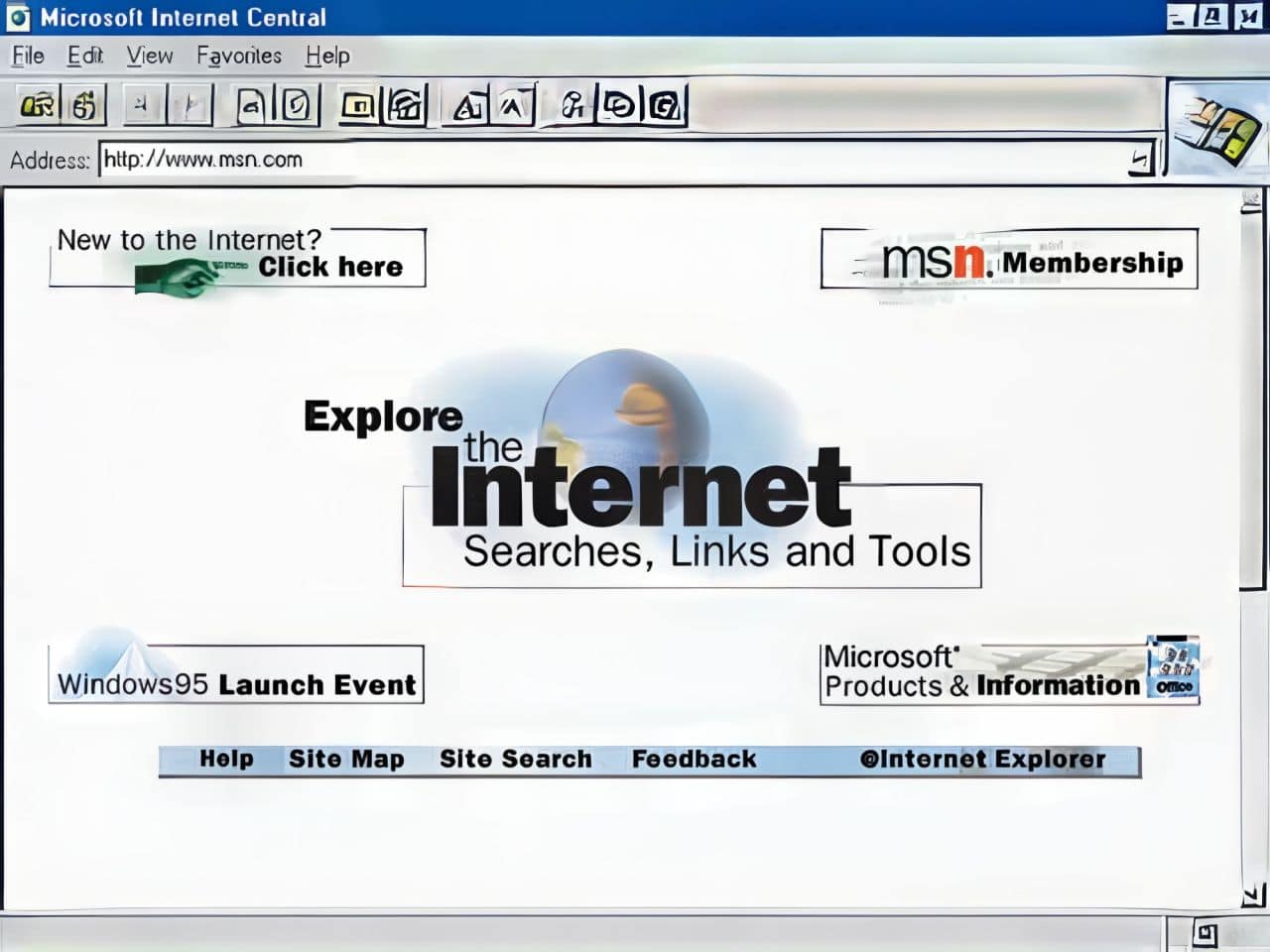
You know, back in the day, Microsoft didn’t have their own web browser. That all changed with Internet Explorer. They saw a program called Spyglass Mosaic and thought it was pretty cool.
So they made a deal with the company that made it. They got to use some parts of Spyglass Mosaic to build something new – Internet Explorer.
They hustled and worked hard, and then boom! Internet Explorer was born in 1995. It came with Windows 95 Plus! pack at first. Later, they put it right into Windows so more people could get online easily.
This move got them into hot water, though, because other companies said it wasn’t fair play to mix the browser with Windows like that.
And here’s a fun twist – later on, folks used Internet Explorer for lots of things on the internet, including playing games like best online IE slots!
The Browser Wars: Internet Explorer vs. Competition (1997–2001)
The late ’90s unleashed a fierce battleground in cyberspace, famously dubbed the Browser Wars, where Internet Explorer clashed with Netscape Navigator for web supremacy. It was during this digital tug-of-war that Microsoft faced antitrust lawsuits, reshaping the future of web browsing and setting precedents in software competition.
United States v. Microsoft
I’m hanging out with my geeky pals, and guess what topic pops up? The epic showdown, United States v. Microsoft. Man, back in 1999, things got super intense when the government smacked Microsoft with a huge “you’re a monopoly” label.
They even wanted to chop the company in half – imagine two mini-Microsofts! Crazy times.
Now, here’s the juicy bit: Microsoft was pushing hard for computer makers to bundle Internet Explorer with Windows. It was like, “You want Windows? Gotta take Internet Explorer too.” That move landed them in hot water and stirred up all those antitrust talks.
They argued it was all cool and just business strategy, but let’s be real; it definitely shook things up in the tech world!
Period of Hiatus and Security Troubles (2003–2006)
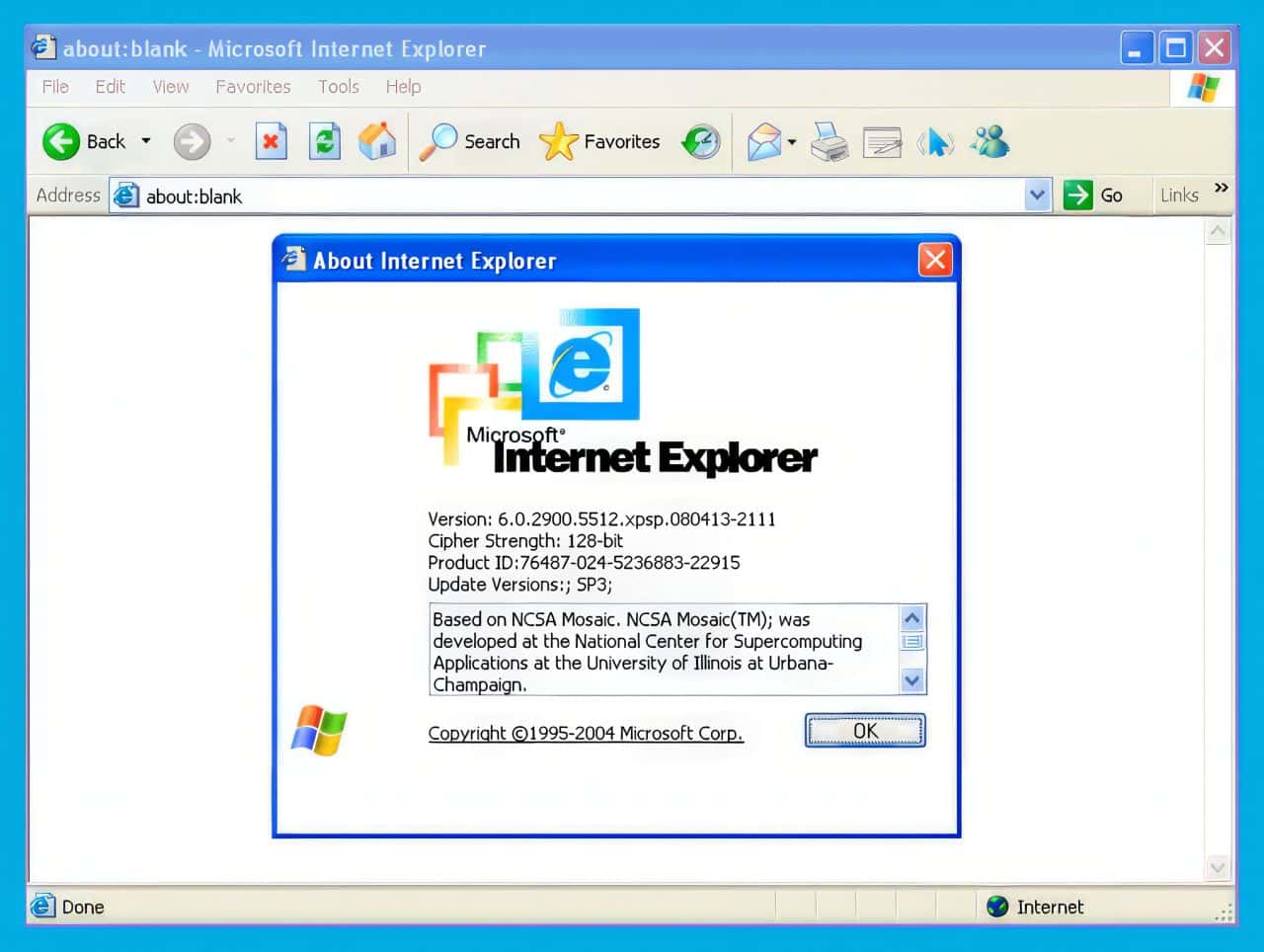
Big news came out in May 2003 – Microsoft dropped a bombshell. They wouldn’t give away Internet Explorer on its own anymore. It was going to come with the Windows operating system only.
I’ll tell you, us geeks were scratching our heads wondering what that would mean for browsing.
Then 2004 rolled around, and Windows XP Service Pack 2 hit the scene. This update was like a big, tough bodyguard against nasty bugs and attacks. It had lots of fixes to make things safer and put new rules on how code could run.
Sure, it wasn’t all smooth sailing – there were bumps along the road when it came to security hiccups, but hey, it made my computer feel like Fort Knox!
New Competition and Challenges (2006–2014)
Let me tell you, those were tough years for Internet Explorer. All of a sudden, Firefox and Google Chrome showed up and started playing hardball. People loved their fancy features and speed—and boy, did they have speed! I saw friends trading in their trusty IE for these shiny new browsers, like kids swapping baseball cards.
It’s not like Microsoft just sat back though; they hustled out Internet Explorer 9 with cool stuff like HTML5 support. But dang it, the market share kept dropping, even dipped below 50% in 2010.
Then Chrome swooped in around May 2012 and stole the crown as the most-used browser on Earth. It was a real gut punch to see that happen after nearly two decades of running the show.
Even us geeks felt it: that struggle between sticking with old reliable or jumping ship to what’s hip and happening. In any case, things sure got more interesting in Browser Land during those years!
Transition to Microsoft Edge: The New Era (2014–present)
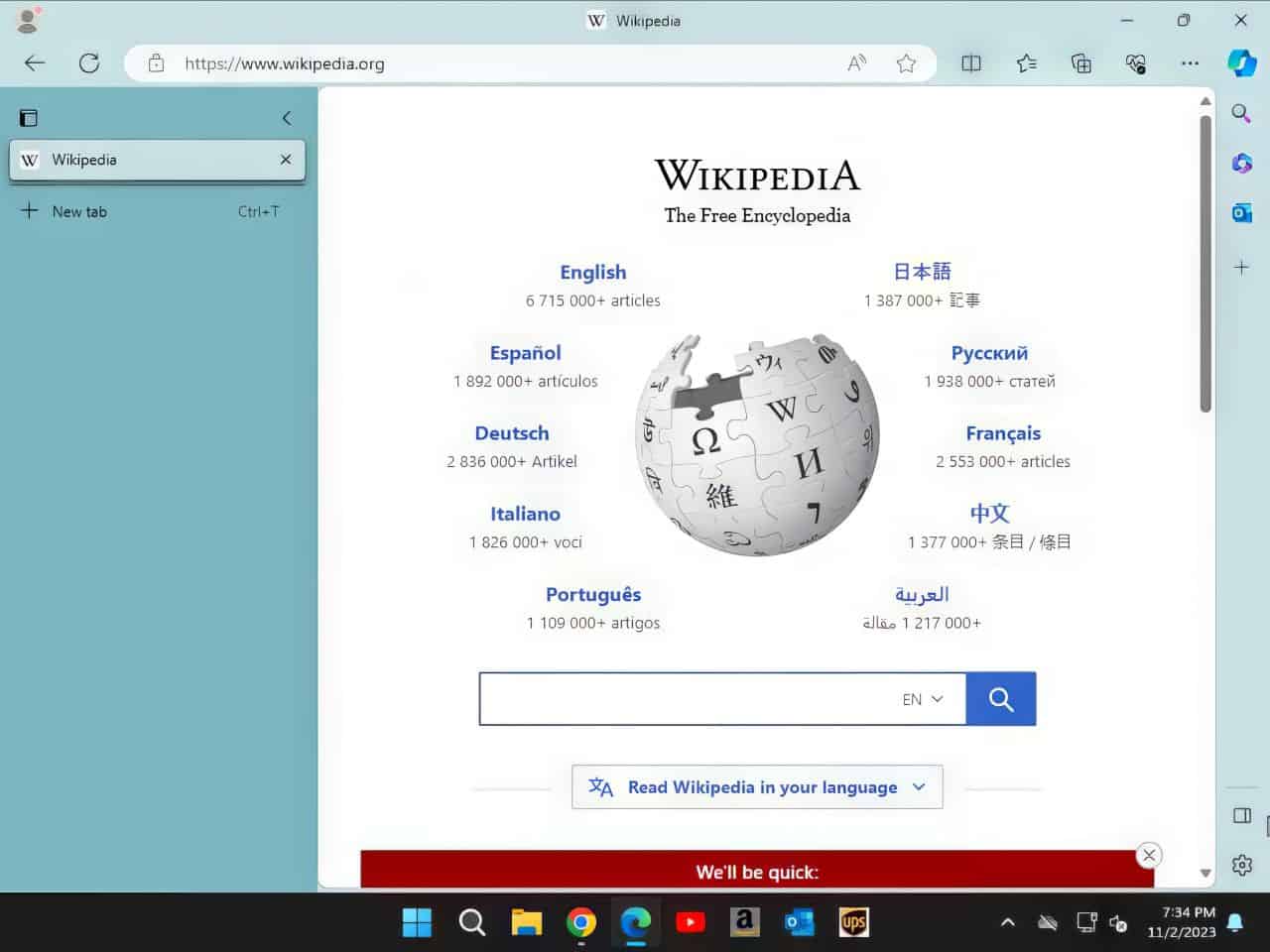
In 2014, I got a whiff of fresh tech air. Microsoft dropped a bombshell: “Project Spartan” was here, later known as Microsoft Edge. It came with Windows 10, and it wasn’t just an upgrade—it was a whole new game.
Internet Explorer? That old pal was now riding shotgun, there for the sake of good ol’ compatibility.
Edge took things up a notch. It tossed out the dusty shelves of IE’s past but kept the shiny bits—like HTML5 standards support from what could’ve been IE12. We’re talking about waving goodbye to all that legacy baggage and saying hello to speed, security, and sleek design.
And get this—it’s not just for Windows anymore! Linux geeks like me can run it too. Plus, Mac users and those on older Windows versions down to Windows 7 are in on the action.
Microsoft’s big move wasn’t just about making another browser; it was about shaking off that Internet Explorer reputation once and for all. They wanted something crisp, something peppy—and with Edge, they sure made their point loud and clear.
Analysis of Internet Explorer’s Market Adoption and Usage
Hey, fellow geeks! Let’s take a peep at Internet Explorer’s wild ride in the market. Picture this: It’s 2002, and bang! Internet Explorer hits an insane 95% market share. Talk about total domination, am I right? That kind of number is superhero-level, making other browsers practically invisible.
But hey, nothing lasts forever in tech land.
Fast forward to May 2012 – surprise twist! Google Chrome leaps ahead and snatches the most-used browser crown from Internet Explorer. Guess people were ready for a change. And get this: Internet Explorer’s ups and downs seem super tied to Windows itself since it comes pre-loaded with it as the default browser.
Think about it; that’s like having your shoes already tied every time you buy new sneakers – convenient but not always what everyone wants.
The plot thickens when Microsoft gets into hot water with the US law for bundling Internet Explorer too tight with its Windows software. Not cool, according to them! Plus, once we hit 2006 and whispers of IE7 start swirling around, we see a slow dip in those user numbers for Internet Explorer.
Clearly got folks curious about what else was out there.
Then boom! October 2006 dropped IE7 on us with some serious security upgrades (much needed), and March 2009 gave us IE8 playing nicer with web standards. They kept adding shiny tools like Download Manager and pop-up blockers, which honestly made life easier while surfing on Windows Vista.
Now let’s zip over to the next bit where things go full circle – Evolution of Internet Explorer Versions!
Evolution of Internet Explorer Versions
Diving headfirst into the digital sea of Internet Explorer’s history, we witness a transformative journey marked by ambitious releases and technological leaps. Each version, from the inaugural 1.0 to the steadfast 11, narrates a chapter in web navigation’s epic saga, reflecting shifts in user needs and software innovation through their unique features and quirks.
Internet Explorer 1
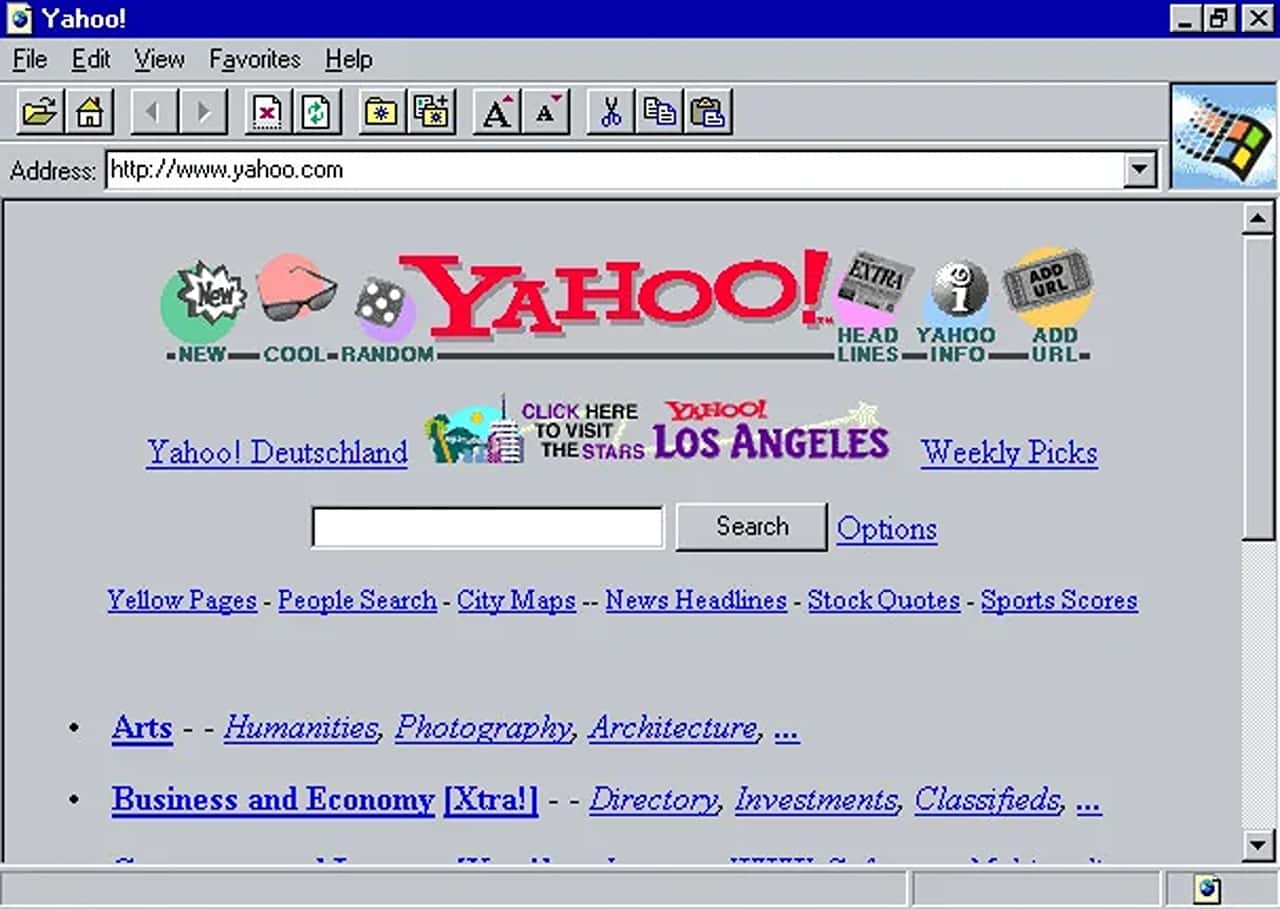
Let’s chat about where it all began with Internet Explorer 1. Back in 1995, this baby hit the scene packed into the Microsoft Plus Internet Jumpstart Kit for Windows 95.
Imagine a time when drop-down menus and crazy frames were hot off the press – because that’s exactly what this browser brought to our screens. It was basic for sure, but hey, you got to start somewhere.
This version also took its first swing at CSS and ActiveX controls. Groundbreaking? Maybe not by today’s standards, but back then, we had just started figuring out how to make web pages do more than just sit there and look pretty.
Thanks to IE1, we got a taste of the potential power behind our pixels!
Internet Explorer 2
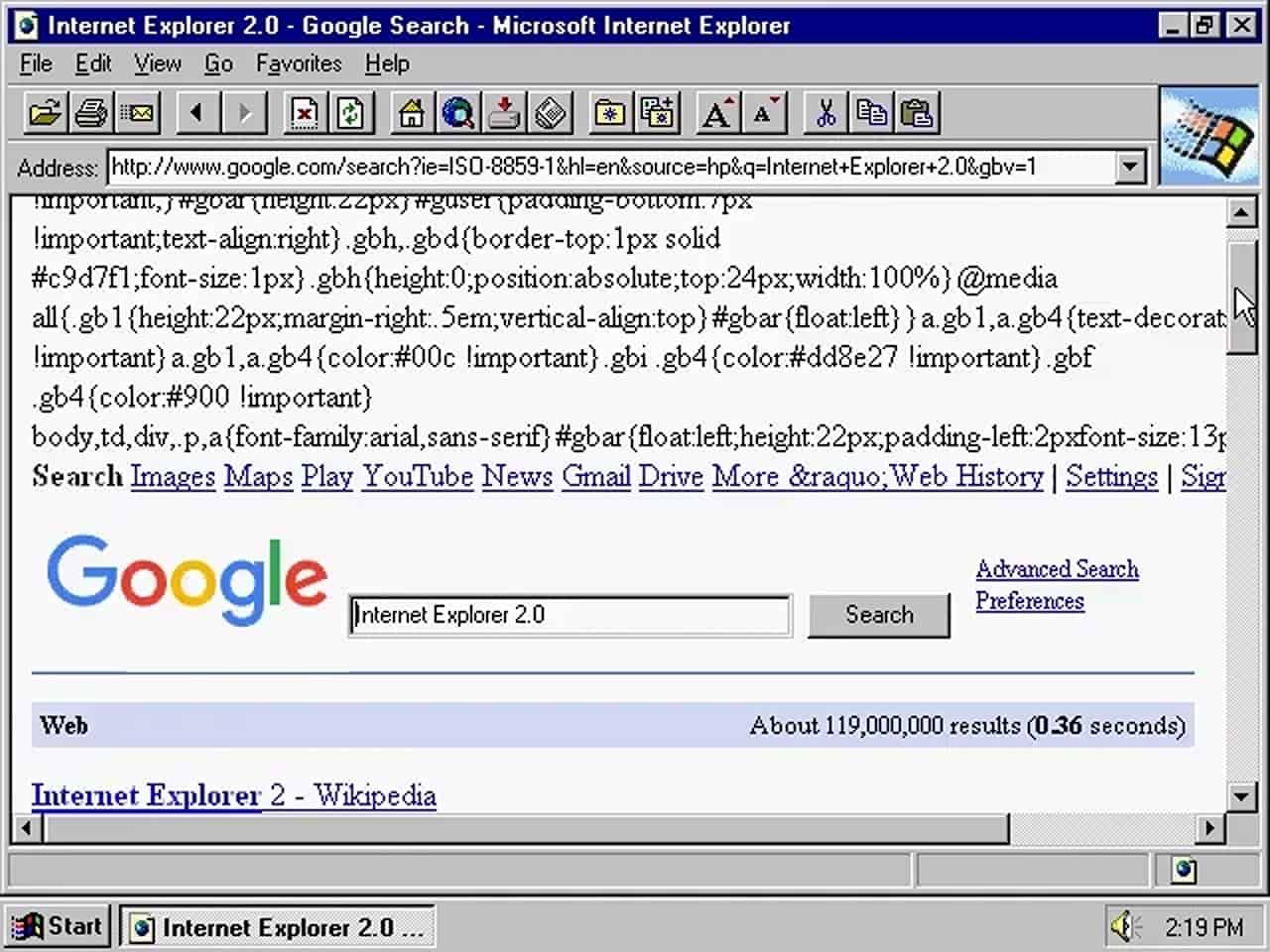
I gotta tell you, back in 1995, when Internet Explorer 2 hit the scene, it was a game changer. Think about this: support for CSS, which meant websites could start getting really stylish with fancy layouts and cooler designs.
It also brought ActiveX controls into the mix—those things let web pages do more than just sit there looking pretty; they could be interactive like some serious computer science magic.
But that’s not all! IE2 cared about keeping your online secrets safe too, so it used SSL to make sure snoops couldn’t spy on what you were up to. And NTLM authentication? That made sure only the right people got into certain areas of websites or networks – no random Joe from down the street peeking at your stuff.
This little piece of software wizardry ran on both Windows 95 and Windows NT systems, covering lots of users who were grokking their way around early internet days. Oh man, browsing back then..
felt like being part of an exclusive club where only us geeks really knew how cool this stuff was going to be!
Internet Explorer 3
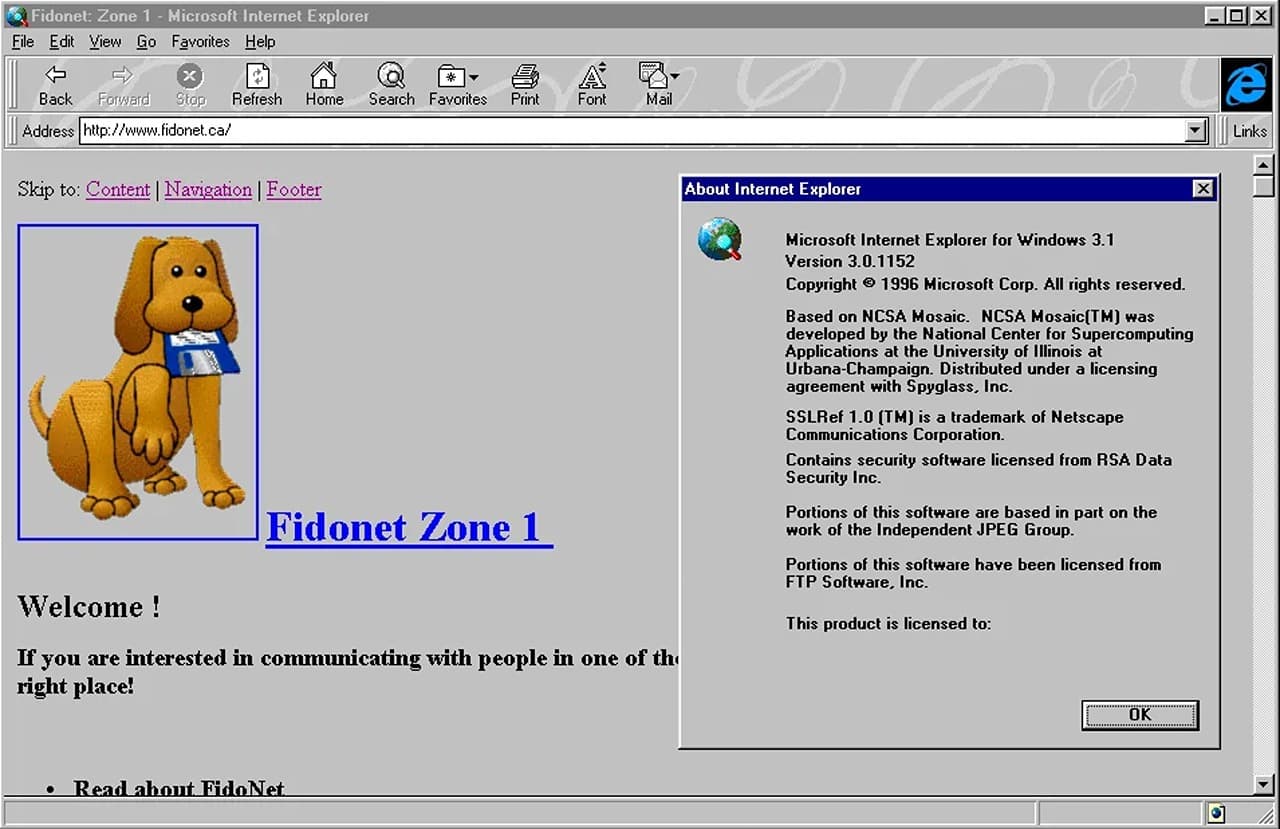
Well, let me tell you about Internet Explorer 3. It was like hitting a tech jackpot back in ’96. Suddenly, we could dress up web pages with CSS (that’s Cascading Style Sheets for the uninitiated).
But IE3 didn’t just stop at making websites pretty. Oh no, it went full throttle by adding ActiveX controls and frames to its bag of tricks.
Microsoft even threw JScript into the mix – their own spin on JavaScript. They bundled IE3 with some cool tools too: Internet Mail and News to keep your inbox sorted, Windows Address Book for all your contacts, and yes, even Windows Media Player hopped on board.
It seemed Microsoft was onto something big, setting the stage for what browsing would become. And boy did geeks like me take notice! We were clicking away with glee because these features meant richer content and more dynamic web experiences.
Not just ruling over text anymore—now browsers felt alive!
Internet Explorer 4
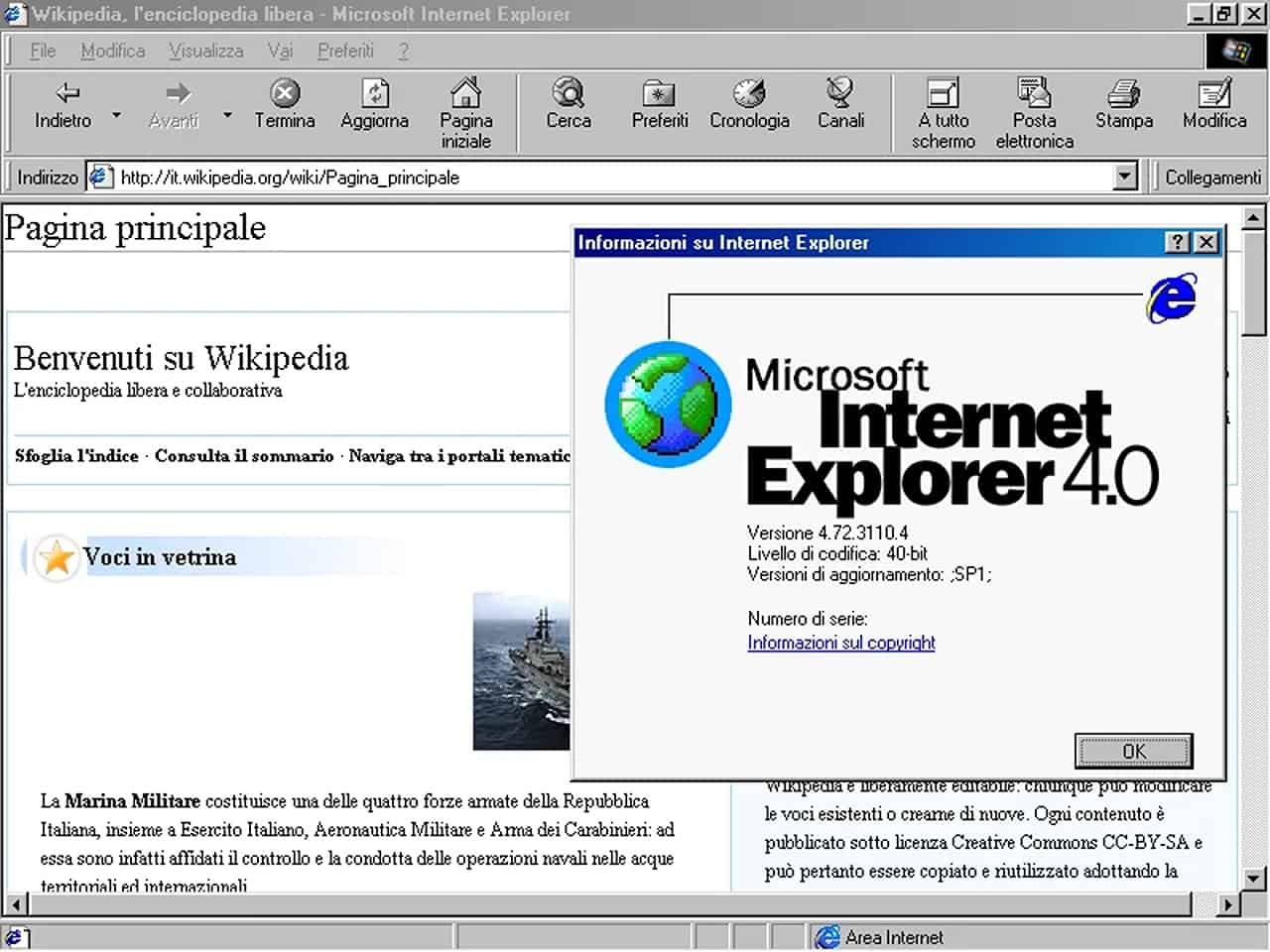
I remember the buzz around Internet Explorer 4 like it was yesterday. Back in September 1997, this browser came out and changed everything for us geeks. It was more than a tool to surf the web; it became part of our computers.
The big thing about IE4? It had something called “Active Desktop.” You could have your favorite websites right on your desktop screen, updating live! Imagine that – no need to open a browser every time.
And let’s talk numbers because they’re pretty wild. By February 2005, sure, IE6 dominated at over 82%, but think about it – even then, Internet Explorer 4 still hung on with a small slice of users at 0.07%.
That’s sticking power – kind of like that one background character in comics who refuses to leave the party. Microsoft tied together browsing with Windows tighter than ever before using IE4, setting the stage for what would come next: Internet Explorer 5 and its own quirks and conquests.
Internet Explorer 5
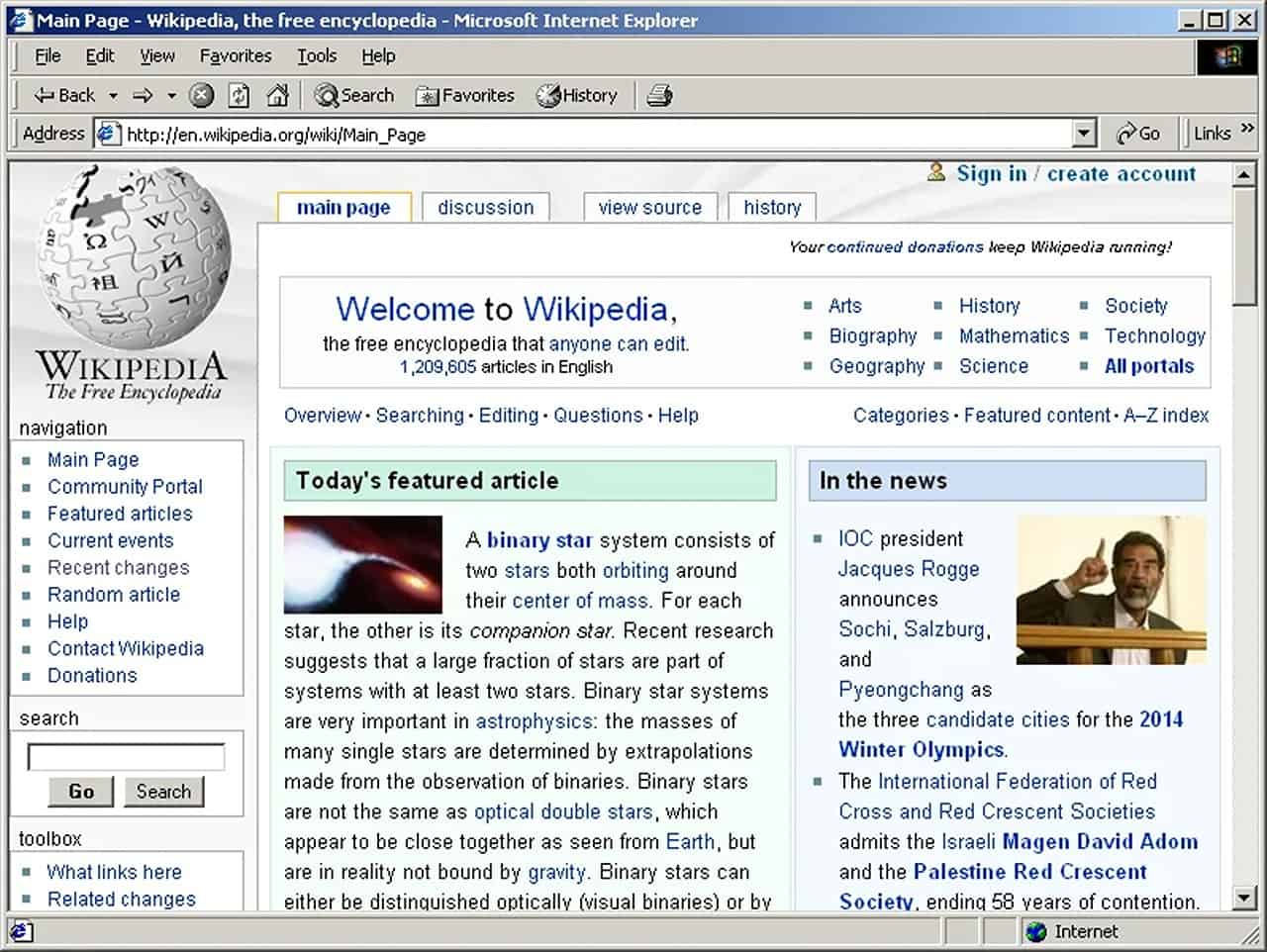
Let me tell you about Internet Explorer 5, which hit the scene in March 1999. This browser was a big deal for folks who loved playing with website design because it really stepped up its game with CSS support.
We’re talking about full-on backing for both Level 1 and Level 2 of Cascading Style Sheets; that’s like giving painters a whole new set of colors to play with on their canvas.
Now get this: even years after newer versions came out, IE5 hung onto users like that one friend who never knows when to leave the party. In February 2005, it still had a slice of the market share pie—6.17% to be exact—and that’s nothing to sneeze at! Whether people just loved its familiar feel or were stuck in their ways, IE5 clung on tight in the competitive world of web browsers.
Internet Explorer 6
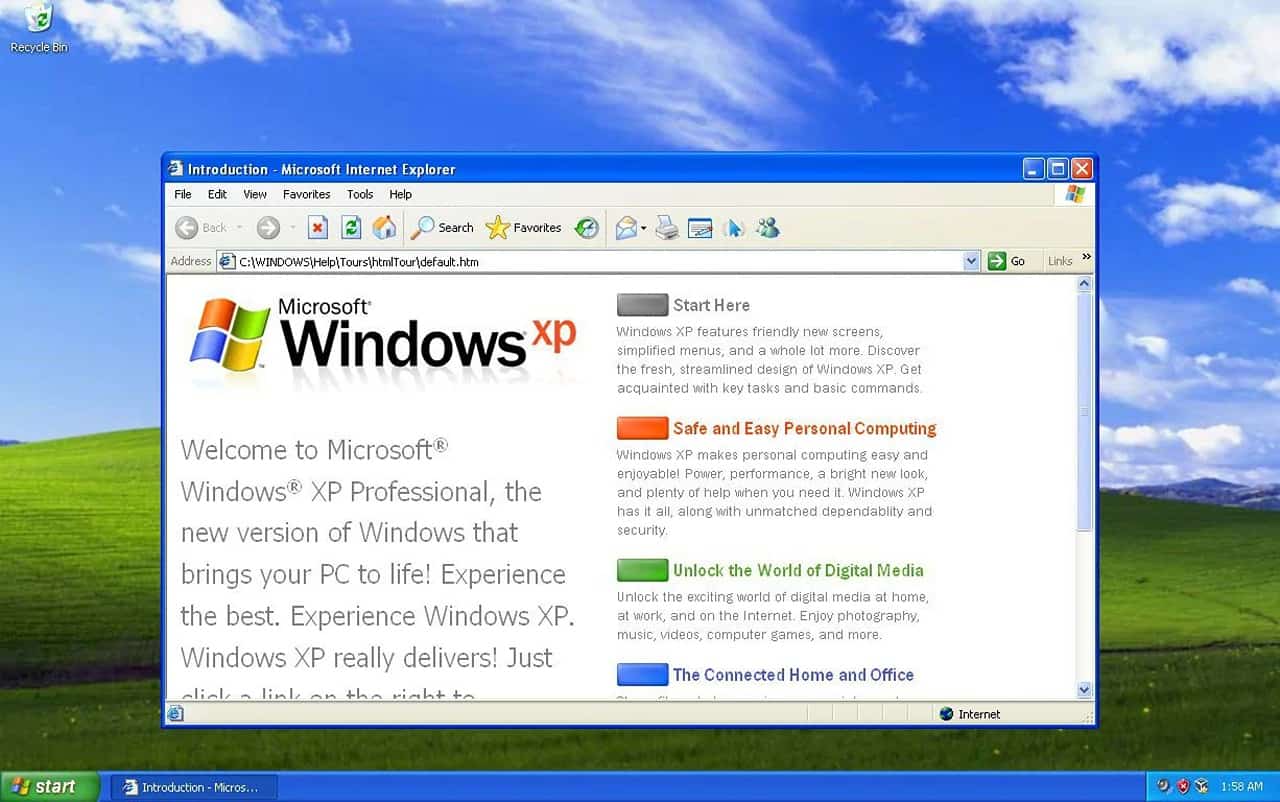
Hey friends, let’s talk about Internet Explorer 6. Oh man, IE 6 hit the stage back in August 2001 and really shook things up. I remember when it was cool to have tabs and check out RSS feeds all in one place – IE 6 made that a reality.
At one point, this browser was running on nine out of ten computers worldwide.
Okay, get this: Internet Explorer 6 wasn’t just another app you could download; it came tied up with Windows itself. This meant if you wanted to use IE 6, you had to be part of the Windows gang.
Also, did you know? It waved goodbye as the last version Mac users could play around with before Microsoft pulled the plug for them too. And those browser wars? Yeah, IE 6 was right there in the thick of it – defending its turf against other big shots trying to take over our screens!
Internet Explorer 7
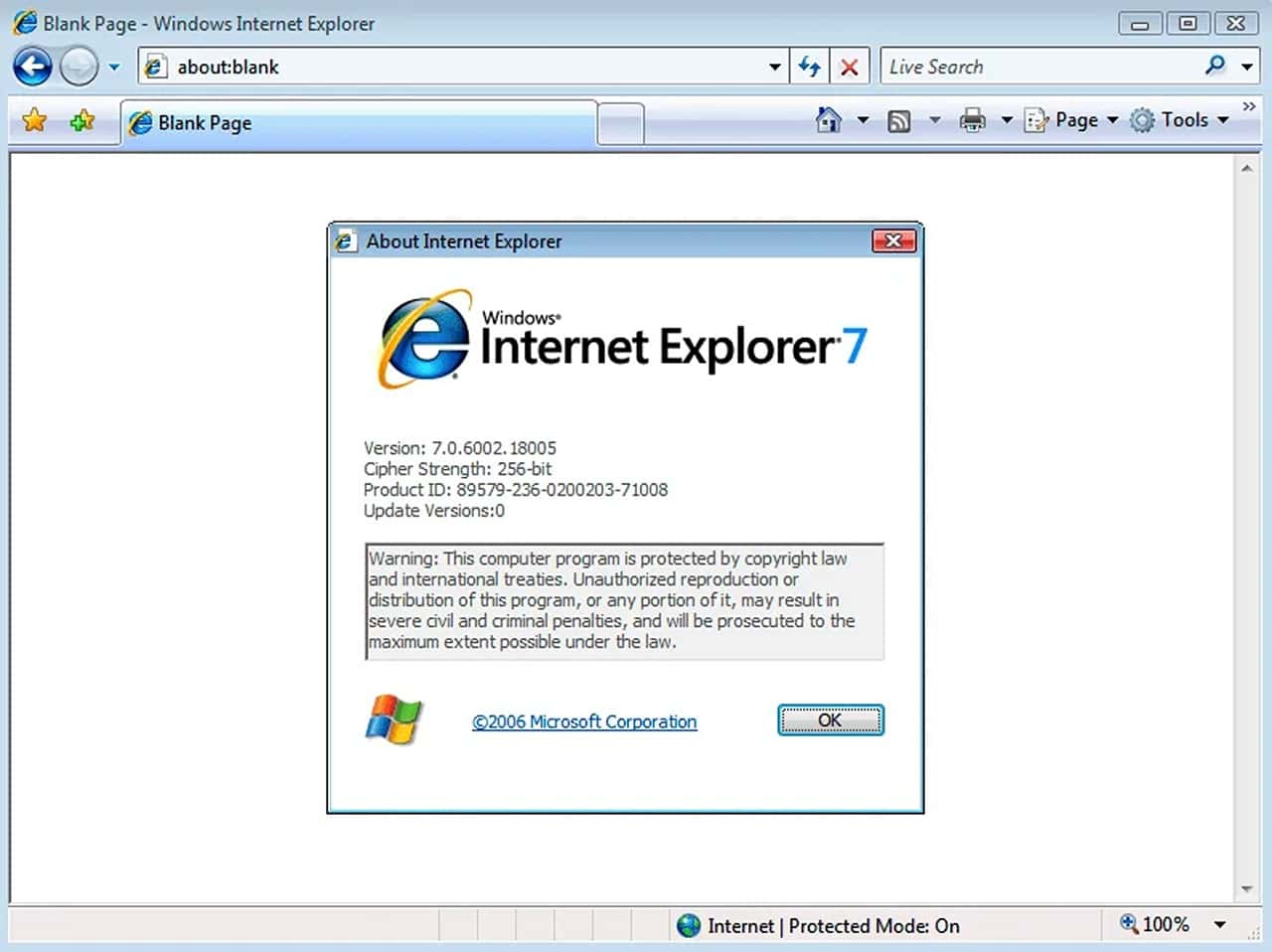
I remember back in October 2006, Microsoft dropped a big one on us: Internet Explorer 7. This wasn’t just any update; it was a complete overhaul. Security got a major boost with this version, and boy was that needed! We’re talking pop-up blockers to keep those annoying ads at bay, a Download Manager to keep tabs on files, and an add-on manager for better control over those browser extensions.
They really put effort into making Internet Explorer 7 stand out. It was like they heard all the chatter about other browsers stepping up their game and said, “Hold my coffee.” With slick features and tighter security, this version aimed to claw back some love from users who might have been eyeing other browsers.
It’s clear that Microsoft wanted us geeks to sit up and take notice – and many of us did.
Internet Explorer 8
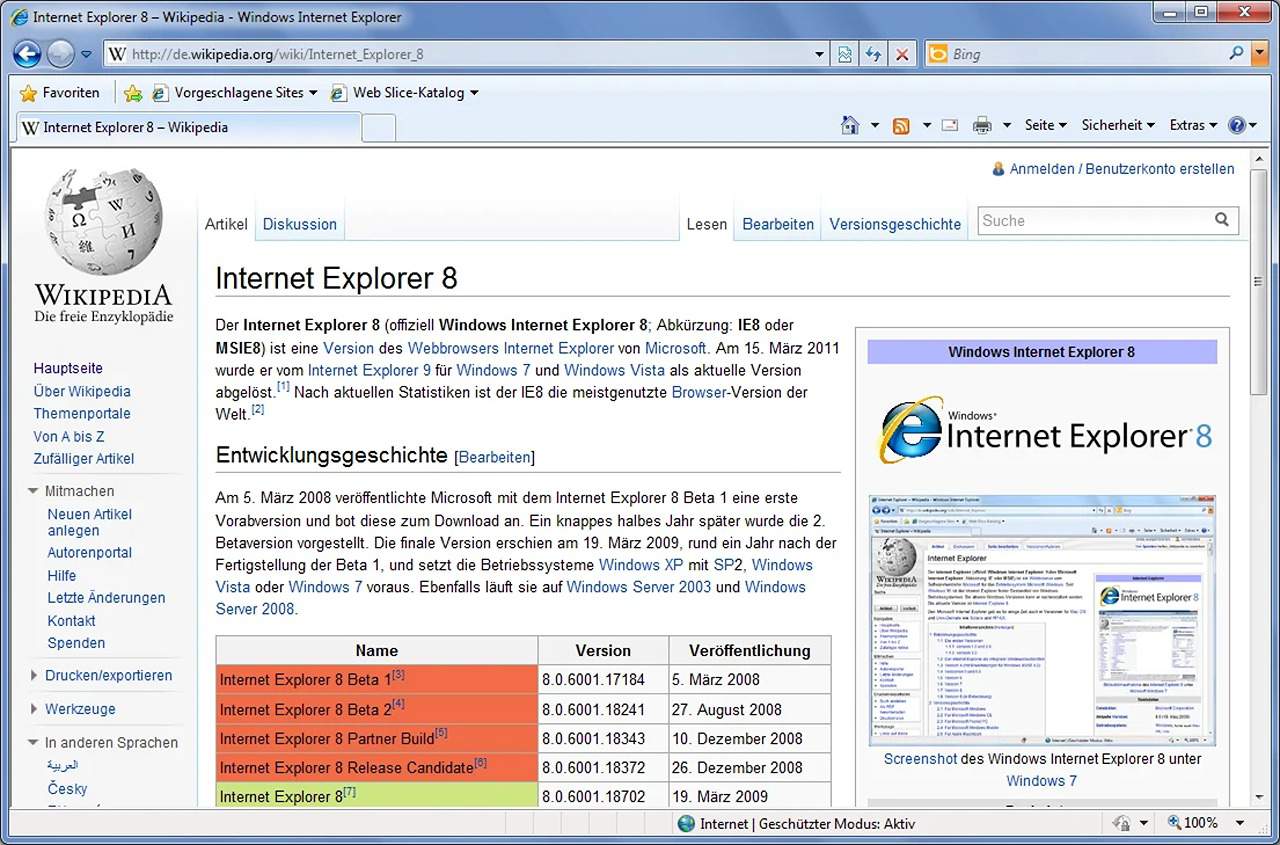
Let’s talk about Internet Explorer 8, the browser that popped onto our screens in March 2009. With this version, Microsoft really upped their game. They brought us tab groups—which, let me tell you, were a total game-changer for keeping my browsing organized—and they seriously improved how well it worked with web standards.
It was like they finally started listening to what we wanted: a simple way to surf the web without pulling our hair out.
They even threw in a smarter phishing filter to keep us safe from those nasty fake sites trying to steal our info. It was clear they were trying hard to stand out from the crowd and make IE8 everyone’s go-to browser.
And for a hot minute, it looked like it might just work against heavy hitters like Firefox or Chrome. Moving on from the serious boost in brains and brawn IE8 showed us, let’s dive into what came next—Internet Explorer 9.
Internet Explorer 9
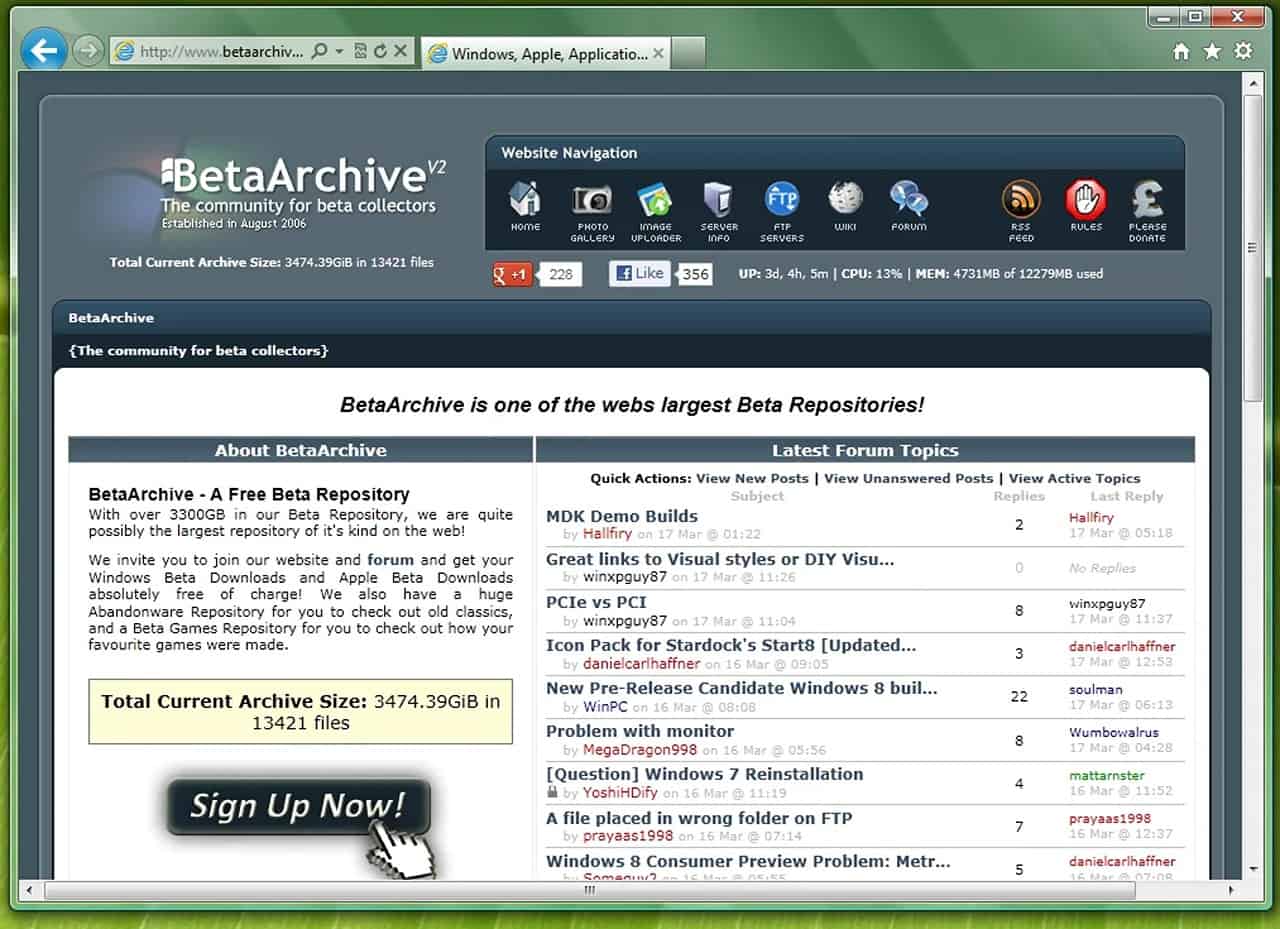
Moving from the solid yet aging Internet Explorer 8, we jump into the world of Internet Explorer 9. Released in September 2010, this version brought us closer to the future of web browsing with partial HTML5 support and hardware acceleration for speedy page loads.
It was like getting a new pair of glasses—the web just looked sharper on IE9.
IE9 stepped up its game to play nice with Windows, making it feel more at home within the operating system. With big players like Google Chrome and Mozilla Firefox in the ring, Microsoft threw in some fancy footwork.
This update marked a significant leap forward; I could watch videos smoother than ever before and admire cleaner designs thanks to better CSS3 support. Internet Explorer 9 was not just an update—it was a statement that Microsoft could still throw punches in the browser brawl.
Internet Explorer 10
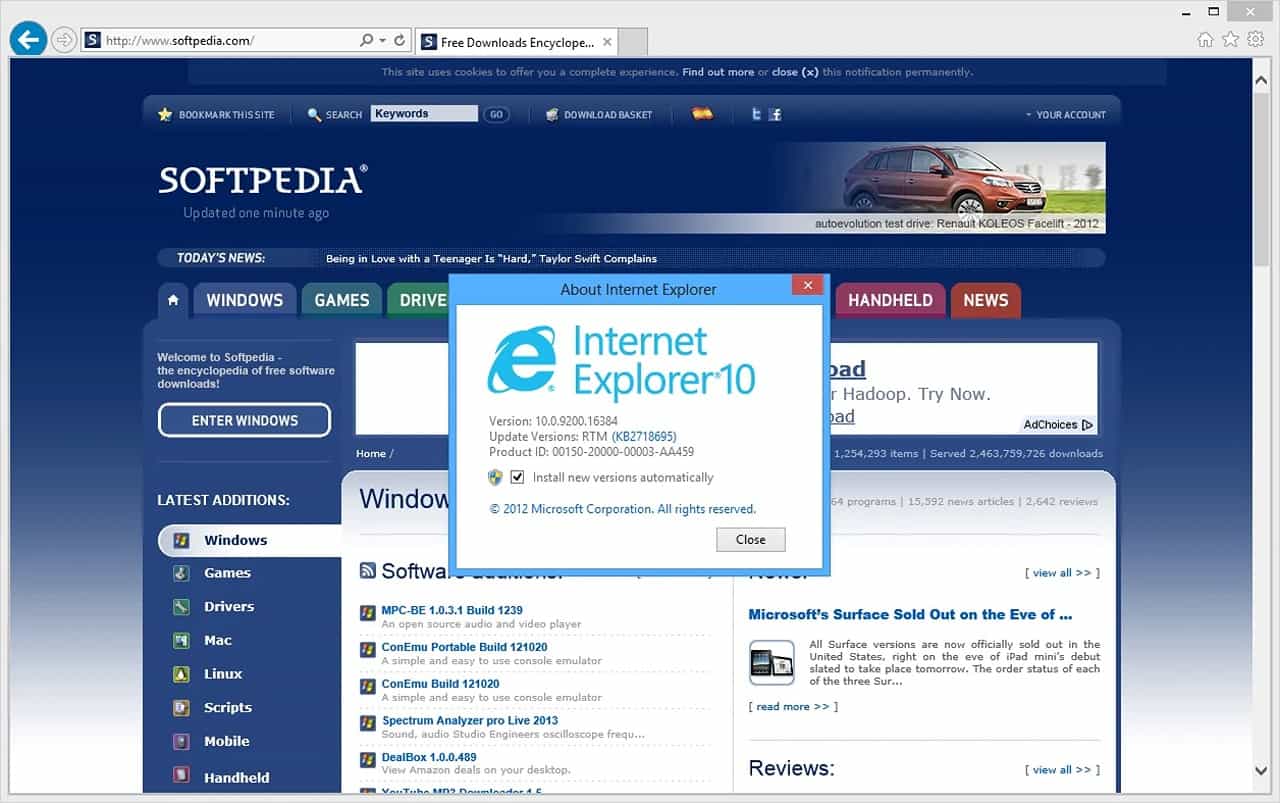
I’ll tell you, Internet Explorer 10 was quite the show when it hit the stage. Picture this: Windows 8 just rolled out, and there’s a shiny new browser that comes with it. You’ve got two flavors of IE10—one you’d pop open from tiles on the Start Screen, all sleek and touch-friendly.
That one is riding high on Microsoft’s bet on touch screens. Then click the desktop icon, and bam! You’re back to classic Internet Explorer.
Let me spill some insider info: they even baked Adobe Flash right into IE10—and we all know how much of a big deal Flash used to be, right? It was also kind of like a swan song because after IE10 came Internet Explorer 11, splitting your browsing into two different experiences depending on where you started from—quite a twist for us geeks who like our tech straightforward.
And get this—it was the last time we saw “Windows Internet Explorer” printed across our screens before Microsoft moved on up to newer things.
Internet Explorer 11
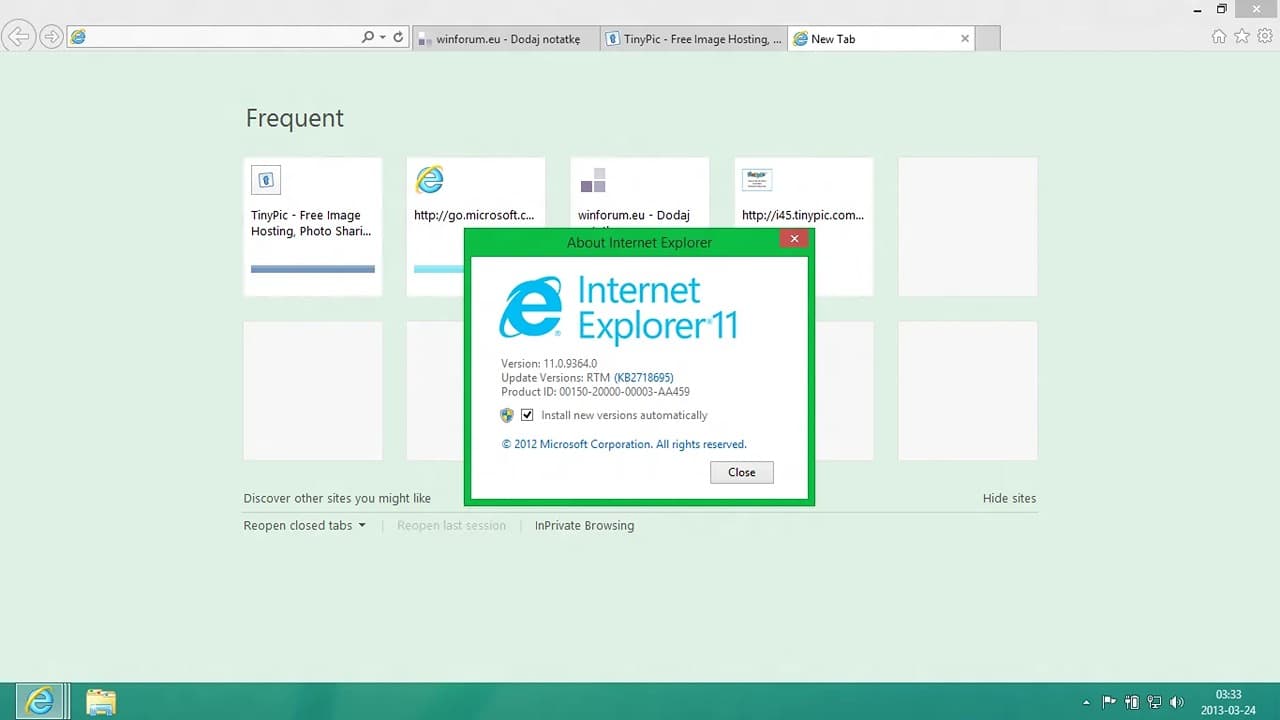
You know, Internet Explorer 11 felt like a big deal when it popped out in 2013. It came along with that shiny Windows 8.1 and tried to show everyone that Microsoft could still hang with the cool kids on the web.
Funny thing – IE11 was kind of like having twins. Open it from your desktop, and it’s one thing: launch it from the Start screen, boom, something else! They made two versions, so whether you were all about touch screens or old-school mouse clicks, they had your back.
Let me tell you, geeking out over browsers is my jam, and IE11 sure gave me stuff to talk about. Quick loading pages? Check. Better security? You got it. And yes, those sleek tabs did look good! But even though IE11 was flexing hard with new tricks up its sleeve—like speedier browsing—sometimes folks just didn’t give credit where credit was due.
All I’m saying is this browser had some moves!
Microsoft Edge: The Successor of Internet Explorer
As we wave a fond—or maybe not-so-fond—farewell to the browser that once reigned supreme, let me introduce you to Microsoft Edge. This modern marvel isn’t just Internet Explorer’s cooler, more sophisticated cousin; it represents Microsoft’s bold leap into the future of web browsing, complete with a new engine under the hood and sleek features for today’s cyber-savvy wanderers.
Microsoft Edge – Spartan
Hey there, fellow geeks! Let me tell you about the time Microsoft decided it was time to shake things up in the browser world. They rolled out this fresh-faced browser called Microsoft Edge.
But before it hit the spotlight, it was undercover with a cool code name — “Project Spartan.” Talk about starting with a bang; Edge made its grand entrance together with Windows 10 on July 29, 2015.
Edge wasn’t just another update—it was a whole new play. It broke away from Internet Explorer’s long shadow and didn’t look back at older Windows versions. Think of Spartan as that bold kid who doesn’t follow in their sibling’s footsteps but instead sets off on their very own trailblazing adventure.
This was Microsoft stepping up its game and offering us something sleeker to surf the web with. And guess what? We were here for it—new engine under the hood and features that promised to make our browsing faster, safer, and just plain better.
Microsoft Edge – Anaheim
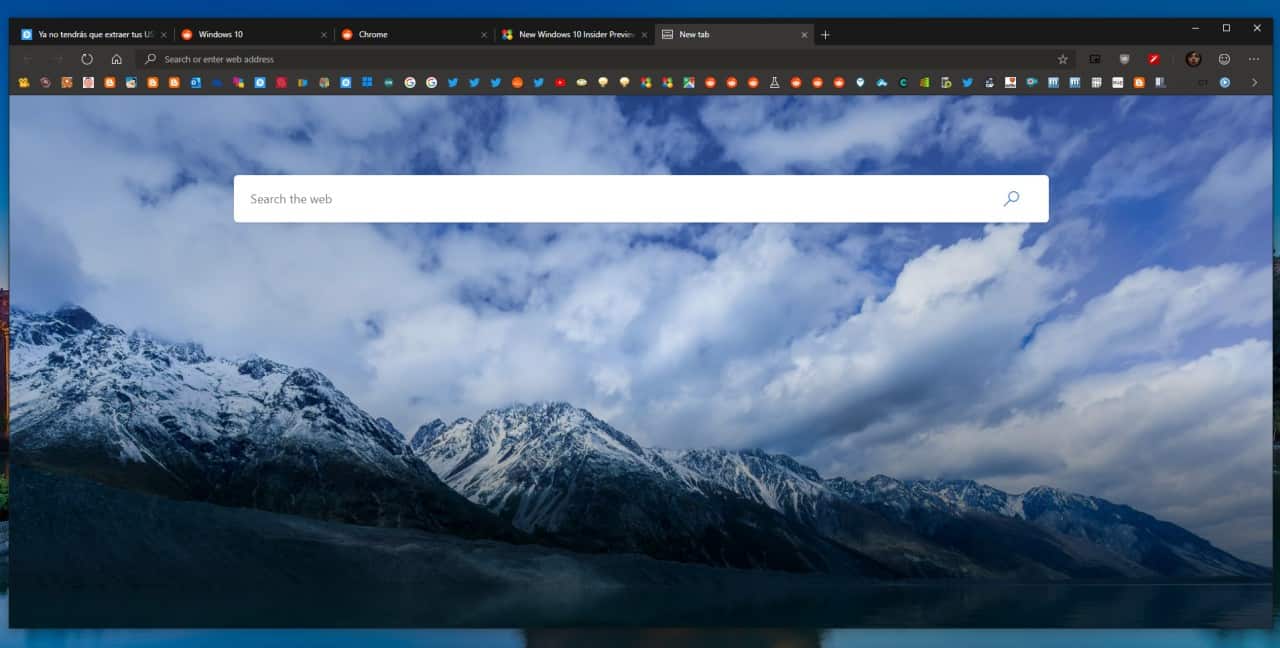
Moving on from Spartan, Microsoft Edge took a big leap with its Anaheim version. This is where things get pretty cool for us geeks! Imagine kicking off all the old stuff that slows you down and just zooming ahead.
That’s what this new browser did. It said goodbye to the past by dropping everything but HTML5 standards support. So now, we’ve got a super sleek program that only looks forward, not back.
This change came with Windows 10 in 2015 when Edge first showed up on our screens. And guess what? It didn’t play nice with old Windows versions anymore—only the new hotness of Windows 10.
For us web wanderers who love cutting-edge stuff without tripping over old cables, Anaheim was like getting a brand-spanking new spaceship with no extra baggage to weigh it down!
A Look Back at Internet Explorer’s Legacy
We’ve zipped through the wild ride of Internet Explorer, from its first steps to the final bow. Think about it: once a giant, IE shaped how we surfed the web. Its story is a mix of wins and stumbles, but hey, that’s innovation for you! Now, we have Edge and other browsers dancing on the scene.
But let’s tip our hats to Internet Explorer – it sure left its mark in the history books of cyberspace.
FAQs About the History of Internet Explorer
What is Internet Explorer, and when did it start?
Internet Explorer, made by Microsoft, began as a web browser for Windows computers. The first version, Internet Explorer 1.0, came out in the mid-1990s.
How has Internet Explorer changed since it was first released?
Since its launch, there have been many versions of Internet Explorer, including IE3.0, IE4.0, and others up to IE6.0, which added new features like CSS support and better page design tools over time.
Did Internet Explorer always work the same way on all Windows systems?
No! Different versions were created for various Windows updates, such as Windows 98 or Windows Vista SP2.
What are some special things that were part of older Internet Explorers?
In the past, users got extras like Outlook Express for email and Microsoft Plus! with games and media programs.
Is Microsoft still updating old versions of Internet Explorer?
Microsoft stopped making new versions after Edge Browser replaced it; they focus on Edge Chromium now instead.
Why don’t people use older browsers much anymore?
Older browsers like early versions of Internet Explorer can’t handle today’s websites well with things like dynamic HTML or AJAX; plus, newer browsers offer more safety features against pop-ups and harmful sites.
